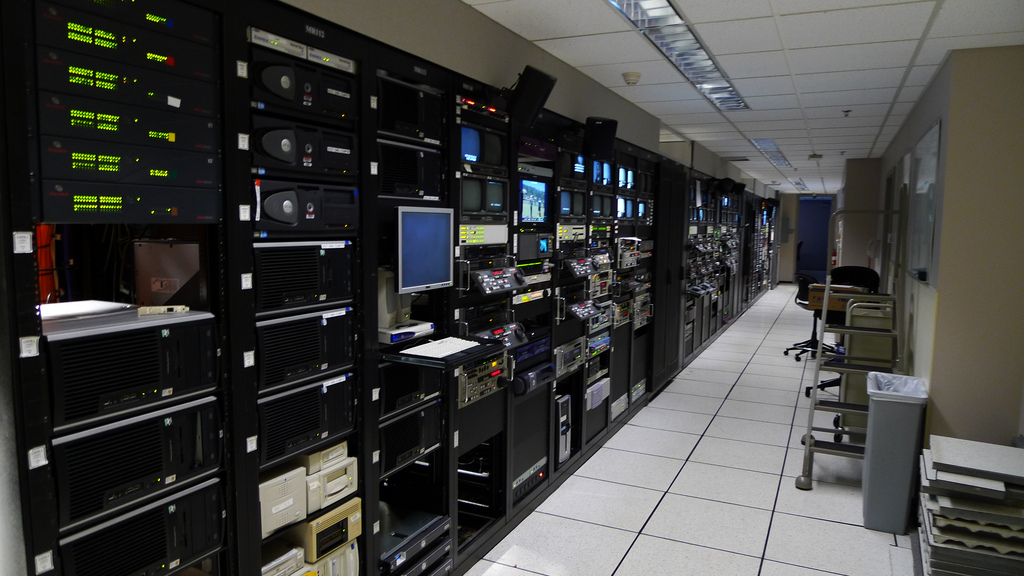Technology is advancing all around us. From our TV’s that we use in our homes to the smart phones we ever so mindlessly use on a day to day basis, and they’re becoming more and more connected to each other too. Technological advancement and connectivity are driving forces in businesses large and small; minimizing costs and effort, and maximizing productivity. Here are just a few of the newest ways in which technology is advancing business.
Information Storage
Moore’s Law states that processing speeds will double every two years, and that the number of transistors on an affordable CPU would also double every two years, but what if we moved away from transistors and advanced into memristors? Originally envisioned by Leon Chua in 1971, the idea is that memristors would be able to store information, even with power loss. HP has announced that they plan to use this technology on a new invention, dubbed The Machine. This innovative piece of technology not only uses these memristors, but also a collection of specialized cores, instead of the traditional smaller number of general cores, and is connected with silicon photonics instead of the traditional copper wires. These improvements boost the speed of the system, and reduce energy requirements, to 80 times less than what we use currently. A smart device with the machine integrated into it could potentially hold 100 terabytes of memory.
It was also designed to be able to work along with the IoT (Internet of Things). IoT is a concept that in the future, most everyday objects will be connected to the internet and be able to identify themselves and communicate with other objects. Think of a business world where information is automatically communicated from an object. For instance, this would allow a forklift to be able to tell your computer how many crates were moved from warehouse A, to warehouse B without having someone count and enter the data themselves. This innovation alone has the potential to help businesses maximize productivity and use data more efficiently.

Management System
Businesses are becoming more efficient every day by using Computerized Maintenance Management Systems (CMMS), Enterprise Asset Management (EAM) Software, and Facilities Management Software (FMS). These systems maximize profits by reducing operating and maintenance costs, and boosting performance. They can keep tabs on maintenance and other activities within an organization through a work order system that is aided by a local network or a cloud-based system (usually called a SaaS or Software as a Service), manage assets and asset life cycles, and even focus on optimizing facilities for space and energy.
You would be able to manage overall equipment effectiveness (OEE) by using the data to determine the availability of equipment, the utilization of, and the quality at which the equipment is actually operating. Let’s give an example, it is very common for equipment to be down for a few weeks each year, say that one hour of downtime will cost your company $500, let’s also assume that there is around 100 hours of downtime for the equipment annually for the company. That means a total loss of $50,000 annually. You can utilize the data from CMMS, EAM, and FMS to lower this loss by appropriately using the software to schedule and control maintenance on the equipment.
CMMS, EAM, and FMS are not as powerful as most enterprise level systems, which are usually completely integrated with other interfaces that are able to access accounting, purchases, human resources, etc. However, these systems can be over complicated, catering to the needs of multiple departments within an organization, where CMMS, EAM, and FML cater to the needs of a single department.
Drupal
We’ve talked about optimizing efficiency in processing information and data, but what about optimizing that content within your company’s website?
Let me introduce you to Drupal. Drupal is a Content Management System (CMS) that takes care of all of the content on your website, and allows you to choose different ways to display it. This helps users navigate through a website and find content faster and easier. One of its best features is that it’s open source software, which means no costs for licensing and it’s free. Thousands of developers worldwide use the Drupal platform, many of them contributing to the community by developing modules. A Module is a snippet of code that works within the Drupal framework, heres a few examples; these add function to websites and can be configured many different ways.
There are extensive libraries of code snippets and themes you can incorporate into a business’s website to make it look professional, give it a social media aspect, a blog atmosphere, or for e-commerce purposes. There is a module for every aspect of a website that you can think of, and if there isn’t, you can code them yourself using PHP, or find a Drupal developer and hire them to code it for you. A Drupal developer can modify or create a website for a business within hours, making it easy to see why this CMS can be of great service to an organization.
